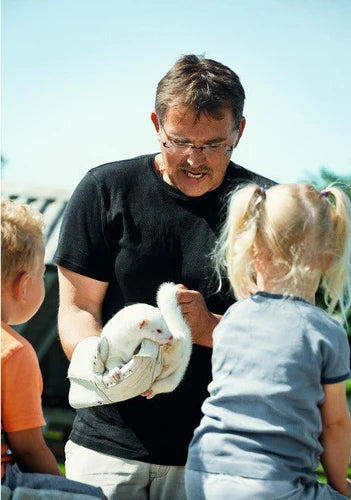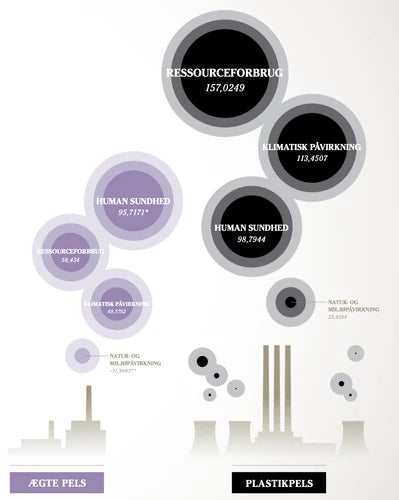
How do we treat Danish mink?
The Danish mink farmers make the best mink skins in the entire world and they are also the leading contributors in the business when it comes to animal welfare. Since 1985 they have followed specific restrictions and demands made from the government to protect the animals and give them the highest possible animal welfare.
The Danish mink farmers are working together with scientists and specialists from Copenhagen University and Aarhus University, who are getting their financial support from the Danish government and Kopenhagen Fur. These scientists have two mink farms, where they observe the well-being of the minks and find new ways to improve their welfare. They share these observations and new initiatives with the farmers.
The Danish mink farmers have a very low number of incidents with disease, death, bitemarks and injuries among the minks. This is because of all the restrictions the farmers live up to. In Denmark we currently have approximately 14.000 mink farms and in each and every one, they live up to these standards.

Also, a veterinarian visits a farm at least once a year, to make sure, that the minks are healthy and well. The Danish mink farms also have to achieve the certificate called Welfur. Welfur is an animal welfare certification of mink farms, that makes sure that the mink farms live up to certain standards, so the minks have a high welfare and live in an environment, that is good for their health and well-being.
An example on what can happen, if these conditions are not being respected is stereotypes among mink. Stereotype is when a mink makes a repetitive monotonous movement pattern with no obvious function. Stereotype is a result of frustration.
Besides Welfur, the Danish mink farmers have the Fur-bearing Animals Act to follow. This act demands the following:
- Natural lightning and variation in daylength throughout the year.
- Mating under natural circumstances that encourages natural mating behavior. This is done in March, where the minks are willing to mate because of increasing day length.
- The cages are 2550 cm2 big and 45 cm tall. Research in this area has shown, that the size of the cage does not mean anything for the welfare of the minks, compared to the interior of the cage.
- Cages with a pipe or shelf for amusement and a nesting box with straw, where they can build a suitable nest.
- The possibility to give birth and nurse without distraction from other minks or humans.
- When the puppies are able to eat, drink and take care of themselves, they are moved away from the mother when they are 12 weeks old, before she starts to chase them away to protect her own territory.
- No trimming, tail clipping or castration.
- They are housed in accordance to their social needs. This means that the puppies live with their mother from May to June, the male and the bitch are together in the growing season in March and the breeding stock are housed alone from December.
- Every mink should be available for inspection at any time, so their health and behavior can be observed by the farmer, a veterinarian or a representative from Welfur.
- They are killed at the farm with carbon dioxide next to their cages without being transported anywhere. The killing is very fast and without any pain.
- They are pelted without any physical harm on their bodies, teeth or organs.
All of these conditions are respected by the Danish mink farmers, and those who do not respect these terms, are not allowed to produce mink in Denmark. The many actions that are made to ensure the welfare of the minks are an important part of why Danish mink has the highest quality in the world. The skins from Danish mink are also the most expensive in the world, because they are 30% more expensive than mink skins from other countries. This is, of course, also because of the research and knowledge sharing that helps to improve animal welfare.
Read more about genuine mink and how they get colored here. At NATURES Collection you can find both luxurious jackets and handbags made of certified Danish mink. Take a look for yourself.




